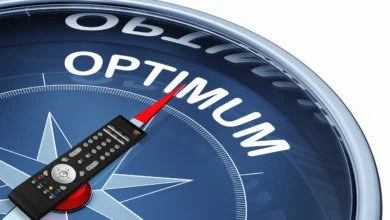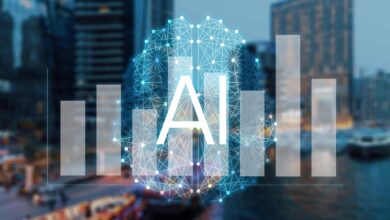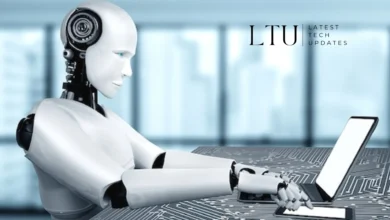What is the Internet of Things (IoT) in Technology? A Simple Explanation

The Internet of Things (IoT) is rapidly transforming technology and how people live and work. But what exactly does it mean when we talk about the “Internet of Things”?
A Straightforward Definition of the Internet of Things
The Internet of Things (IoT) refers to the billions of internet-connected physical devices around the world that can collect, share and act on data, usually without human intervention.
These devices range from industrial machines and smart home appliances to wearables and vehicles. Equipped with sensors, internet connectivity and computing capability, they can communicate with users, systems and each other.
The core value of IoT lies in getting better data, drawing insights from it and driving improvements across processes, user experiences and even business models.
The Main Components That Power the IoT Ecosystem
Several key technology innovations have accelerated the adoption of IoT in recent years:
- Inexpensive and Miniature Sensors: A variety of sensors like temperature, pressure, humidity, proximity, motion can detect events or changes in the environments and convert them into electrical signals to be processed. High quality sensors are now cheaper and smaller.
- Improved Connectivity: Various networking protocols like 4G/5G, WiFi, Bluetooth, LoRaWAN now enable sensors to connect more reliably to the cloud and each other.
- Cloud Computing Platforms: Scalable cloud platforms make it easy to store, process and analyze torrents of IoT data using cloud services.
- Better Analytics: Advances in areas like machine learning have made it possible to gain better insights from IoT data faster through analytics and automation
These technology enablers have paved the way for IoT adoption. But proper security mechanisms also need to be deployed for safe IoT implementations.

Widespread Applications of IoT Across Different Industries
IoT has a wide range of applications across consumer and enterprise domains:
Smart Homes
Home devices like smart fridges, washer-dryers, door locks, lighting systems can all be controlled and programmed remotely via IoT connectivity. Home security solutions also leverage internet-enabled cameras, motion sensors and other devices for improved monitoring against intrusions or accidents.
Wearables
Fitness bands and smart watches with sensors enable continuous health and activity monitoring versus manual tracking. For employees in hazardous work environments, wearables also help detect safety risks like high temperatures so preventive action can be taken.
Manufacturing & Logistics
IoT enables advances like predictive maintenance – using machine sensor data to detect failures before they occur and trigger proactive fixes. In supply chain management, IoT provides improved shipment monitoring and asset tracking. Cold chain logistics also benefits from temperature and environment sensors in perishable transfers.
Smart Cities
IoT deployed at scale helps city infrastructure like traffic signals, street lights, waste management to be managed more efficiently through better data. Environmental sensors also help authorities monitor pollution levels across different parts of the cities.
Healthcare Systems
Patient monitoring devices like ECG, pacemakers, glucose tests that connect doctors to patients’ health information in real-time lead to faster interventions. Asset management also becomes seamless in hospitals using IoT tags for tracking medical equipment.
This is just a glimpse of how different sectors are leveraging IoT to drive impact. The basic principles however remain focused on using device connectivity and data exchange to make systems smarter.
Frequently Asked Questions About IoT in Technology
Here are some additional questions commonly asked about IoT in technology and their concise answers:
Q1. How does an IoT system work from data capture to value creation?
A1. The key steps involve:
- Sensors in IoT devices detecting events, changes in their environment.
- Data from sensors transmitted securely to an IoT platform over internet protocols.
- Cloud platform analyzes data streams using algorithms, AI to gain insights.
- Insights are visualized in apps, drives automation through devices.
- Data-driven improvements across processes, user experience, costs etc.
Q2. What are some key benefits enterprise organizations can realize from IoT?
A2. Strategic business benefits from IoT include:
- Faster innovation and improved products based on field data.
- Increased productivity and asset utilization through tracking.
- Lower operational costs through predictive techniques.
- New data-centric business models and revenue channels.
Q3. What are some limitations currently faced in adoption of IoT solutions?
A3. A few technology challenges faced today:
- Ensuring data security and privacy as devices multiply.
- Seamless device interoperability and legacy integration.
- Lack of common standards across segments.
- Managing exponential data growth and storage needs.
- Making sense from data vis-a-vis just collecting it.
Q4. Does the rise of 5G connectivity impact the Internet of Things?
A4. Yes, significantly. With higher multi-Gbps speeds and lower latency, 5G enables:
- Near real-time critical communication between devices.
- Increased number of devices per unit area of deployment.
- Advanced applications using AR/VR, digital twins etc.
- New products like autonomous vehicles leveraging instant connectivity.
The Future of IoT Looks Full of Promise
As IoT adoption grows across industries and use cases, technology improvements and cost declines will act as accelerants. IDC predicts the number of connected IoT devices to touch 55.7 billion by 2025, generating huge amounts of data.
Successfully harnessing insights from this data holds the key to creating responsive and intelligent systems that enhance efficiency, experiences and sustainability. With appropriate security safeguards and data governance as guardrails, the future looks exciting for exploration of IoT’s possibilities!





